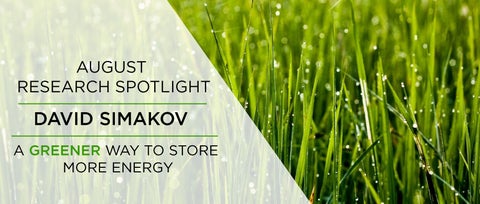A Greener Way to Store More Energy
Microgrids are transforming the way we produce and distribute electricity, enabling communities to generate their own power independently of the main grid. These small-scale systems are well suited for renewables, but daily fluctuations in wind and solar energy make it difficult to guarantee a reliable supply. And although storing excess electricity in batteries can buffer supply and demand, this approach requires high capital cost investment. Professor David Simakov believes chemistry may offer a better and cheaper solution. In his lab at the University of Waterloo’s Sustainable Reaction Engineering Group, Prof. Simakov and his team are developing a highly efficient thermocatalytic converter for microgrids.
The ultimate goal is to develop a power-to-fuel system that will use renewable energy (produced by wind turbines, solar panels etc.) to drive an electrolyzer that will convert water into oxygen and hydrogen. The generated hydrogen will then be fed into the thermocatalytic converter being developed by Prof. Simakov’s team. This highly efficient catalytic unit combines the hydrogen with carbon dioxide from sources such as raw biogas, landfill gas, and flue gas from a power plant, producing synthetic methane. This renewable natural gas can be injected into the existing natural gas infrastructure.
Thermo-catalytic conversion isn’t a new process, but until now, it has been limited primarily due to large scale industrial applications, such as natural gas reforming. To scale down the technology for microgrids, Prof. Simakov’s team is using emerging materials, nano-structuring and state-of-the-art reactor design to develop a compact and low-cost reactor for conversion of CO2 into a synthetic renewable fuel.
According to Prof. Simakov, this green, highly-efficient energy storage technology will make microgrids more viable, paving the way for greater use of renewable energy and reduction of our reliance on fossil fuels.
Researchers: Assistant Professor David Simakov
